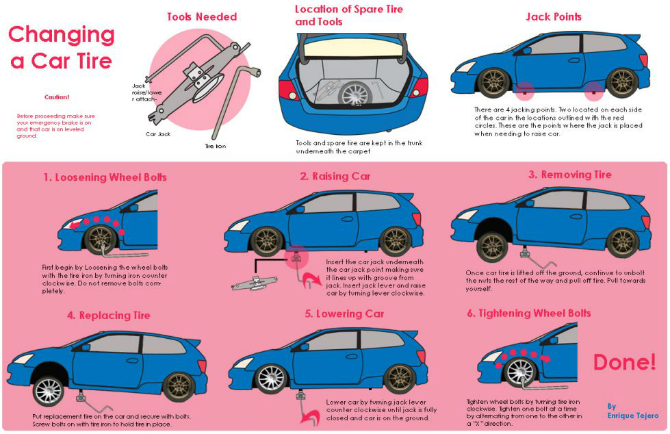How to Change a Tire Like a Pro
While it can be frustrating, knowing how to change a tire is a valuable skill that can save you time, money, and stress.

A flat tire is an unexpected inconvenience that every driver may face at some point. While it can be frustrating, knowing how to change a tire is a valuable skill that can save you time, money, and stress. In this comprehensive guide, we'll walk you through the step-by-step process of changing a tire, from gathering the necessary tools to getting back on the road safely.
Changing a tire might seem daunting, but with the right tools, knowledge, and a little practice, you can become a tire-changing pro. Whether you're on a busy road or a remote area, having the ability to replace a flat tire will give you the confidence to handle unexpected situations.
How to Change a Tire Like a Pro
Essential Tools and Safety Precautions
Before you start, ensure you have the following tools and materials:
- Spare Tire: Make sure your vehicle is equipped with a spare tire that's properly inflated.
- Lug Wrench: This tool is used to loosen and tighten the lug nuts.
- Car Jack: A car jack is essential for lifting the vehicle off the ground.
- Wheel Wedges: These prevent the vehicle from rolling while you work.
- Gloves: Protect your hands from dirt and grease.
- Flashlight: If you're changing a tire at night or in low-light conditions, a flashlight is handy.
- Reflective Triangle: Place it behind your vehicle to alert other drivers of your presence.
Safety Precautions:
- Always change the tire on a flat, level surface.
- Engage the parking brake before starting.
- Keep passengers out of the vehicle while you're working.
- Stand clear of the road and traffic.
- Be cautious of passing vehicles while working.
Finding a Safe Location
If you experience a flat tire while driving, find a safe and level area to pull over. Avoid stopping on a slope or on soft ground. Turn on your hazard lights to alert other drivers.
Gathering Tools and Materials
Before you start, ensure that you have all the necessary tools and materials mentioned earlier. Keep them within easy reach, and put on your gloves to protect your hands.
Loosening the Lug Nuts
Using the lug wrench, loosen the lug nuts on the flat tire. Turn them counterclockwise, but don't remove them completely yet. This is easier to do while the tire is still on the ground and providing resistance.
Lifting the Vehicle
Place the car jack in the manufacturer-recommended spot under your vehicle's frame. Pump the jack until the vehicle is lifted off the ground, but not completely. Make sure the vehicle is stable before proceeding.
Removing the Flat Tire
Finish loosening the lug nuts and remove them completely. Gently pull the flat tire straight toward you to remove it from the wheelbase.
Installing the Spare Tire
Position the spare tire onto the wheelbase. Align the holes in the wheel with the bolts on the car. Push the tire onto the wheelbase until it's flush.
Lowering the Vehicle and Tightening Lug Nuts
Carefully lower the vehicle using the jack until the spare tire is resting on the ground but not bearing the full weight of the car. Begin tightening the lug nuts by hand in a crisscross pattern.
Checking the Spare Tire
Using the lug wrench, tighten the lug nuts as much as possible in the crisscross pattern. Lower the vehicle fully and remove the jack. Give the lug nuts a final tightening using the lug wrench.
Packing Up and Wrapping Up
Put the flat tire, jack, and tools back into your trunk. Double-check that everything is secured before driving. Drive slowly and carefully to a repair shop to have your flat tire repaired or replaced.
Preventing Flat Tires: Maintenance Tips
- Regularly check your tire pressure and keep it at the recommended level.
- Inspect your tires for signs of wear, punctures, or damage.
- Rotate your tires regularly to ensure even wear.
- Avoid potholes and sharp objects on the road.
Knowing how to change a tire is a fundamental skill that every driver should possess. It's not only a practical skill that can save you from being stranded on the side of the road, but it also empowers you to handle unexpected situations with confidence. By following these step-by-step instructions and practicing in a safe environment, you'll be well-prepared to tackle flat tires and get back on the road in no time.
What's Your Reaction?
















